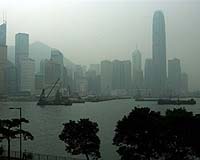| . |  |
. |
New Delhi (AFP) Dec 16, 2009 South Asia's largest prison -- Tihar Central Jail in New Delhi -- is hoping to become the first in the world to go green, by using renewable energy, recycled waste and cutting its electricity consumption. The size of a small town, the vast complex in the west of the Indian capital has 10 prison blocks, covers 160 hectares (395 acres) and is massively overcrowded. Close to 11,500 inmates, most of them men, are currently crammed into its functional, barely sanitary cells -- nearly double the prison's authorised capacity. But the prison director-general, B.K. Gupta, wants to improve living conditions for the inmates, most of whom are on remand awaiting trial, and make it environmentally-friendly. "We want to achieve international standards and more than that. It's a small city here, we have a lot of open area," said the former police officer, who launched an audit several months ago. Tihar is ideally placed to become what he called "the world's first green prison" in the next three years as it has the space, notably for gas plants to meet the facility's energy needs. Piped natural gas fuel has been used to cook food in the kitchens for the last 25 years. There are also rainwater harvesting systems to keep ground water levels topped up. Two sewage treatment plants are being set up to recycle water for horticulture and sanitation. The government is putting in half the money for the 9.65-million-rupee (210,000-dollar) "greening" project, which aims to recycle tonnes of household waste in four biogas facilities set up near the prison's kitchens. The target is to cut greenhouse gas emissions and the prison's 45-million-rupee annual electricity bill, eventually saving the authorities millions of rupees every year. Biomass gasifiers fed with sawdust from wood pruned from the many trees on site and offcuts from the prison workshop where 350 people make furniture for sale to the public will help provide fuel for cooking. A solar-powered heating system is also planned for water provision. The inmates use 30,000 litres of water every day. Gupta explained that during the winter period from November to March, inmates will no longer have electricity from 7:00 am to 9:00 am and between 3:00 pm and 5:00 pm. "They don't need electricity in the mornings. They do their yoga or meditation outside the cells," he said. In summer, when the temperature can rise to 50 degrees Celsius (122 degrees Fahrenheit), fans will be kept on so prisoners "don't suffocate, like in other jails in Asia," he added. Elsewhere, lightbulbs in the cells and administrative offices will also be replaced with low-energy alternatives, allowing a 50 to 70 percent reduction in electricity consumption. In the infirmary of the women-only block of prison number six, one female doctor was happy to hear of the proposed changes -- but wants the authorities to go further. "We don't have specialists here. And we also need a lot of new equipment, not only for energy," she added, looking at the iron-framed beds on which a number of inmates lay asleep, wrapped up in the covers. Share This Article With Planet Earth
Related Links Our Polluted World and Cleaning It Up
 Smog sinks Hong Kong's famous skyline
Smog sinks Hong Kong's famous skylineHong Kong (AFP) Dec 16, 2009 On top of Victoria Peak in Hong Kong, groups of tourists find themselves staring down at an apocalyptic vision of a towering city shrouded in a menacing grey smog. The haze blurs one of the world's most famous skylines and veils the ships dotting the harbour, disappointing visitors who made the trip to the Peak for a glimpse of what can be a spectacular panorama. When a scene like this ... read more |
|
| The content herein, unless otherwise known to be public domain, are Copyright 1995-2009 - SpaceDaily. AFP and UPI Wire Stories are copyright Agence France-Presse and United Press International. ESA Portal Reports are copyright European Space Agency. All NASA sourced material is public domain. Additional copyrights may apply in whole or part to other bona fide parties. Advertising does not imply endorsement,agreement or approval of any opinions, statements or information provided by SpaceDaily on any Web page published or hosted by SpaceDaily. Privacy Statement |